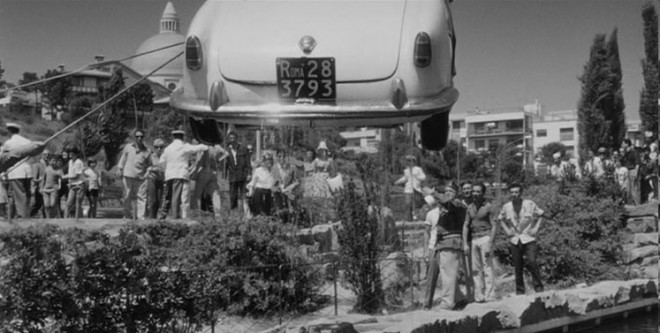Alas, I have seen Alain Resnais and Chris Marker’s Les statues meurent aussi only in the infamously truncated version that the French government permitted for forty years. Even so, it’s a thing of passionate politics and dark, dazzling visual beauty.
The film opens in primordial darkness; a disembodied voice speaks: “When men have died they enter history. When statues have died they enter art. This botany of death is what we call culture.”
Light appears, revealing public sculptures; even outdoors, these are objects of art such as one might encounter in a Western museum. A passage in such a museum that cuts between a piece of art and a patron gazing at it underscores the point; the reality of the piece relies on the patron’s perception. This patron has entered the museum precisely to “see art”; seeing it is something she does in her life. It isn’t a part of her life. The piece no longer belongs to the person who created it and that person’s community.
African art is part of people’s everyday lives. But by uprooting it, colonialism has usurped its identity. This is emblematic of colonialism’s assault on African communities and human lives.
A tracking shot surveys piece after piece enrobed in darkness, but that is followed cuttingly by a montage of pieces, each one separate, isolated. Our eyes have replaced those of the patron. A montage of brilliantly grotesque death masks, intended to frighten away Death, now suggests labored curiosities: the impression on this art and its black African creators of Western museumitis. Elsewhere, scenes of Africans singing and variously working suggest the vitality from which African art has been cut off.
Statues also die when they aren’t growing in the vibrant garden of a people’s communal existence.
B(U)Y THE BOOK
MY BOOK, A Short Chronology of World Cinema, IS CURRENTLY AVAILABLE FROM THE SANDS FILMS CINEMA CLUB IN LONDON. USING EITHER OF THE LINKS BELOW, ACCESS THE ADVERTISEMENT FOR THIS BOOK, FROM WHICH YOU CAN ORDER ONE OR MORE COPIES OF IT. THANKS.
